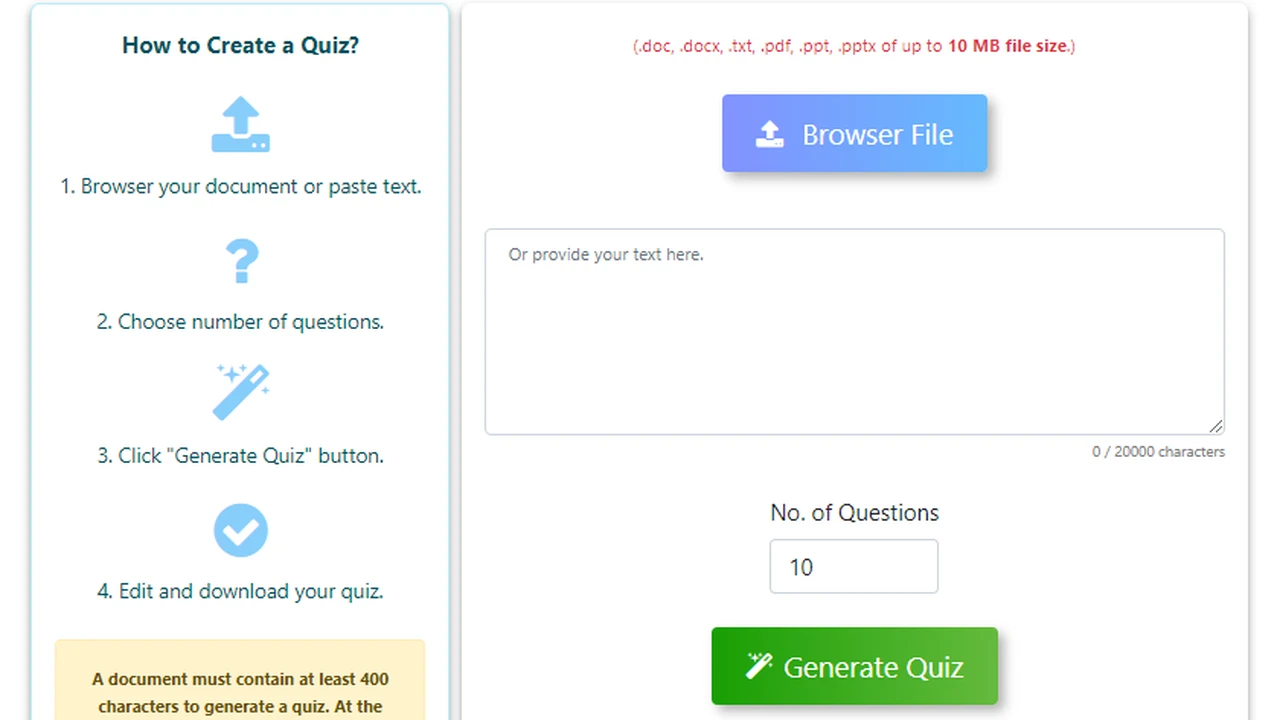AI Regulation and Policy Global Perspectives
Compare different approaches to AI regulation and policy development across various countries.

AI Regulation and Policy Global Perspectives
The Global Push for AI Governance Understanding Diverse Approaches
Artificial intelligence is transforming our world at an unprecedented pace. From automating tasks to powering complex decision-making systems, AI's influence is undeniable. But with great power comes great responsibility, and governments worldwide are grappling with how to regulate this rapidly evolving technology. There's no one-size-fits-all solution, and different nations and blocs are adopting diverse approaches to AI regulation and policy development. This article dives deep into these global perspectives, exploring the nuances, challenges, and potential impacts of various regulatory frameworks. We'll look at the European Union's comprehensive approach, the United States' sector-specific strategy, China's focus on control and innovation, and the emerging trends in Southeast Asia. Understanding these differences is crucial for anyone involved in AI development, deployment, or simply living in an AI-powered world.
The European Union Leading the Way with Comprehensive AI Legislation
The European Union has positioned itself as a global leader in AI regulation with its proposed AI Act. This landmark legislation aims to establish a comprehensive legal framework for AI, focusing on safety, fundamental rights, and ethical considerations. The EU's approach is risk-based, categorizing AI systems into different levels of risk: unacceptable, high, limited, and minimal. Systems deemed 'unacceptable risk' are outright banned, such as social scoring by governments. 'High-risk' AI systems, which include those used in critical infrastructure, law enforcement, and employment, face stringent requirements, including conformity assessments, human oversight, and robust data governance. The goal is to foster trust in AI while promoting innovation within a clear ethical boundary.
Key Features of the EU AI Act and its Implications
The EU AI Act introduces several key obligations for providers and deployers of high-risk AI systems. These include requirements for data quality, technical documentation, human oversight, cybersecurity, and transparency. For instance, high-risk AI systems must be designed and developed in a way that allows for human oversight, ensuring that individuals can intervene and correct errors. Data quality is paramount, with provisions to ensure that training data is relevant, representative, and free from biases. The Act also mandates post-market monitoring and reporting of serious incidents. Non-compliance can lead to significant fines, potentially up to 30 million Euros or 6% of a company's global annual turnover, whichever is higher. This strong enforcement mechanism underscores the EU's commitment to ensuring responsible AI development. While the Act is still in its final stages of approval, its influence is already being felt globally, with many countries looking to the EU as a benchmark for their own AI regulations.
The United States A Sector-Specific and Innovation-Focused Approach
In contrast to the EU's broad legislative approach, the United States has adopted a more sector-specific and less prescriptive regulatory strategy. The US government generally prefers to leverage existing laws and regulations, adapting them to address AI-specific concerns within various industries. This approach emphasizes fostering innovation and economic growth, with a focus on voluntary frameworks, guidelines, and standards rather than sweeping legislation. The National Institute of Standards and Technology (NIST) has played a significant role in developing an AI Risk Management Framework, providing guidance for organizations to manage risks associated with AI systems. This framework is voluntary but aims to promote trustworthy and responsible AI development across sectors.
Notable US Initiatives and Their Impact on AI Development
Several key initiatives highlight the US approach. The Biden administration issued an Executive Order on the Safe, Secure, and Trustworthy Development and Use of Artificial Intelligence in October 2023. This order directs federal agencies to establish new standards for AI safety and security, protect privacy, promote innovation, and advance equity. It also calls for the development of AI safety and security standards, including red-teaming exercises for frontier AI models. Furthermore, various federal agencies, such as the Food and Drug Administration (FDA) for AI in healthcare and the Department of Transportation (DOT) for autonomous vehicles, are developing specific guidelines and regulations for AI within their respective domains. This decentralized approach allows for flexibility and responsiveness to the unique challenges and opportunities presented by AI in different sectors. While it may lack the comprehensive nature of the EU AI Act, it aims to avoid stifling innovation with overly broad regulations.
China's Dual Focus on Control and AI Leadership
China's approach to AI regulation is characterized by a dual focus: asserting state control over AI development and deployment while simultaneously aiming to become a global leader in AI technology. The Chinese government has introduced a series of regulations targeting specific aspects of AI, such as deepfakes, recommendation algorithms, and generative AI. These regulations often emphasize content moderation, data security, and algorithmic transparency, reflecting the government's desire to maintain social stability and control information flows. At the same time, China has heavily invested in AI research and development, with ambitious national strategies to dominate key AI sectors by 2030.
Key Chinese AI Regulations and Their Global Implications
Recent regulations like the Administrative Provisions on Algorithm Recommendation Services (2022) and the Interim Measures for the Management of Generative Artificial Intelligence Services (2023) illustrate China's regulatory philosophy. The algorithm recommendation rules require platforms to provide users with options to opt out of personalized recommendations and to explain how algorithms work. The generative AI measures place significant responsibility on service providers to ensure that generated content adheres to socialist core values and does not infringe on intellectual property rights. These regulations have significant implications for both domestic and international AI companies operating in China, requiring them to adapt their AI systems to comply with strict content and data requirements. While China's approach prioritizes state control and national security, it also aims to create a robust domestic AI ecosystem that can compete globally.
Southeast Asia Emerging Trends and Regional Cooperation
Southeast Asia is a diverse region with varying levels of AI adoption and regulatory maturity. While no single, overarching AI regulatory framework exists across all ASEAN (Association of Southeast Asian Nations) member states, there's a growing recognition of the need for responsible AI governance. Many countries in the region are in the early stages of developing their AI strategies and policies, often drawing inspiration from both the EU and US models. There's a strong emphasis on fostering innovation and economic growth through AI, alongside addressing ethical concerns and ensuring data privacy.
Country-Specific AI Initiatives in Southeast Asia
Countries like Singapore have been proactive in developing AI governance frameworks. Singapore's Model AI Governance Framework provides practical guidance for organizations to deploy AI responsibly, focusing on explainability, fairness, and accountability. It's a voluntary framework designed to be adaptable and technology-agnostic. Other countries, such as Malaysia and Thailand, are also developing national AI strategies that include elements of ethical AI guidelines and data governance. The ASEAN region is also exploring regional cooperation on AI, aiming to develop common principles and best practices to facilitate cross-border AI development and deployment. This collaborative approach could lead to a more harmonized regulatory landscape in the future, balancing innovation with responsible AI use.
Comparing Regulatory Frameworks Strengths and Weaknesses
Each regulatory approach has its strengths and weaknesses. The EU's comprehensive, risk-based approach offers legal certainty and aims to build public trust, but it could be seen as potentially stifling innovation due to its stringent requirements. The US's sector-specific, innovation-focused approach allows for flexibility and rapid adaptation, but it might lead to a fragmented regulatory landscape and potential gaps in oversight. China's state-controlled approach ensures compliance with national priorities and rapid deployment of AI, but it raises concerns about censorship and individual freedoms. Southeast Asia's emerging frameworks are still evolving, with a focus on balancing economic growth and ethical considerations, but they face the challenge of regional diversity and varying levels of technological maturity.
The Future of Global AI Governance Towards Harmonization or Divergence
The future of global AI governance is likely to be a mix of harmonization and divergence. While there's a growing international dialogue on common AI principles, such as fairness, transparency, and accountability, the specific regulatory mechanisms will likely continue to vary based on national priorities, legal traditions, and economic contexts. We might see the emergence of 'AI blocs' with similar regulatory philosophies, but complete global harmonization seems unlikely in the near term. However, the increasing interconnectedness of the AI ecosystem will necessitate greater international cooperation on issues like data sharing, cross-border AI deployment, and the development of interoperable standards. The ongoing discussions at international forums like the G7, G20, and the UN highlight the global recognition of AI's transformative power and the urgent need for responsible governance.
Practical Tools and Frameworks for AI Governance and Compliance
For businesses and developers navigating this complex regulatory landscape, several tools and frameworks can help ensure compliance and responsible AI development. These aren't necessarily regulatory products but rather methodologies and software solutions that aid in adhering to ethical guidelines and legal requirements.
AI Governance Platforms and Their Features
Several platforms are emerging to help organizations manage their AI governance. These platforms often provide features for AI model documentation, risk assessment, bias detection, and compliance tracking. They can help automate parts of the compliance process, making it easier for companies to adhere to regulations like the EU AI Act or internal ethical guidelines.
- IBM Watson OpenScale: This platform offers capabilities for monitoring AI models for fairness, explainability, and drift. It helps detect bias in real-time and provides explanations for model predictions, which is crucial for transparency requirements. It integrates with various AI frameworks and cloud environments. Pricing is typically subscription-based, varying with usage and features.
- Google Cloud's Explainable AI (XAI): While not a standalone governance platform, Google Cloud's XAI tools are integrated into their AI platform and help developers understand, evaluate, and debug their machine learning models. This is vital for meeting explainability requirements in regulations. It's part of the broader Google Cloud ecosystem, with pricing based on usage of compute and storage resources.
- Microsoft Azure Machine Learning: Azure ML includes features for responsible AI development, such as fairness assessment, interpretability, and privacy-preserving machine learning. These tools help developers build and deploy AI systems that are compliant with ethical guidelines. Pricing is consumption-based, depending on the services used within Azure.
- Arthur AI: This is a dedicated AI performance monitoring and explainability platform. It focuses on detecting model drift, bias, and performance issues in production AI systems. It's designed to help enterprises ensure their AI models are fair, accurate, and compliant. Pricing is typically enterprise-level, customized based on deployment scale.
- Fiddler AI: Similar to Arthur AI, Fiddler provides an AI Observability platform that helps monitor, explain, and analyze machine learning models in production. It assists in identifying and mitigating bias, ensuring model fairness, and providing audit trails for compliance. Pricing is usually tailored for enterprise clients.
Best Practices for Implementing AI Governance
Beyond specific tools, adopting best practices is essential. This includes establishing an internal AI ethics committee, conducting regular AI risk assessments, implementing robust data governance policies, and ensuring transparency in AI decision-making. Training employees on AI ethics and responsible AI development is also crucial. Companies should also consider developing an internal AI governance framework that aligns with relevant external regulations and their own organizational values. This proactive approach not only helps with compliance but also builds trust with customers and stakeholders, fostering a more responsible and sustainable AI ecosystem.
The Interplay of AI Regulation and Innovation Balancing Act
The ongoing debate about AI regulation often centers on the tension between regulation and innovation. Critics argue that overly stringent regulations can stifle innovation, making it difficult for companies to develop and deploy new AI technologies. Proponents, however, contend that responsible regulation is necessary to prevent harm, build public trust, and ensure the long-term sustainability of AI development. The challenge for policymakers is to strike the right balance: creating frameworks that protect individuals and society without hindering technological progress. This involves fostering regulatory sandboxes, promoting international collaboration on standards, and ensuring that regulations are adaptable to the rapid pace of AI advancement. The goal is not to stop innovation but to guide it towards beneficial and ethical outcomes.
The Role of International Cooperation in Shaping AI Policy
Given the global nature of AI, international cooperation is increasingly vital. No single country can effectively regulate AI in isolation. Discussions at forums like the G7, G20, OECD, and the UN are crucial for sharing best practices, developing common principles, and addressing cross-border challenges such as data flows and algorithmic bias. Initiatives like the Global Partnership on Artificial Intelligence (GPAI) aim to bridge the gap between theory and practice in AI governance, bringing together experts from various fields to promote responsible AI. This collaborative approach is essential for building a coherent and effective global AI governance landscape that can address the complex ethical, social, and economic implications of AI.
Looking Ahead The Evolving Landscape of AI Governance
The field of AI regulation is still in its nascent stages and will continue to evolve rapidly. As AI technology advances, new challenges and opportunities will emerge, requiring policymakers to adapt their approaches. We can expect to see more specific regulations addressing areas like synthetic media, autonomous systems, and the use of AI in critical decision-making. The focus will likely shift from simply regulating AI to governing the entire AI lifecycle, from data collection and model training to deployment and monitoring. The ongoing dialogue between governments, industry, academia, and civil society will be crucial in shaping a future where AI serves humanity responsibly and ethically. Staying informed about these developments is key for anyone looking to thrive in the AI-powered world.
:max_bytes(150000):strip_icc()/277019-baked-pork-chops-with-cream-of-mushroom-soup-DDMFS-beauty-4x3-BG-7505-5762b731cf30447d9cbbbbbf387beafa.jpg)






